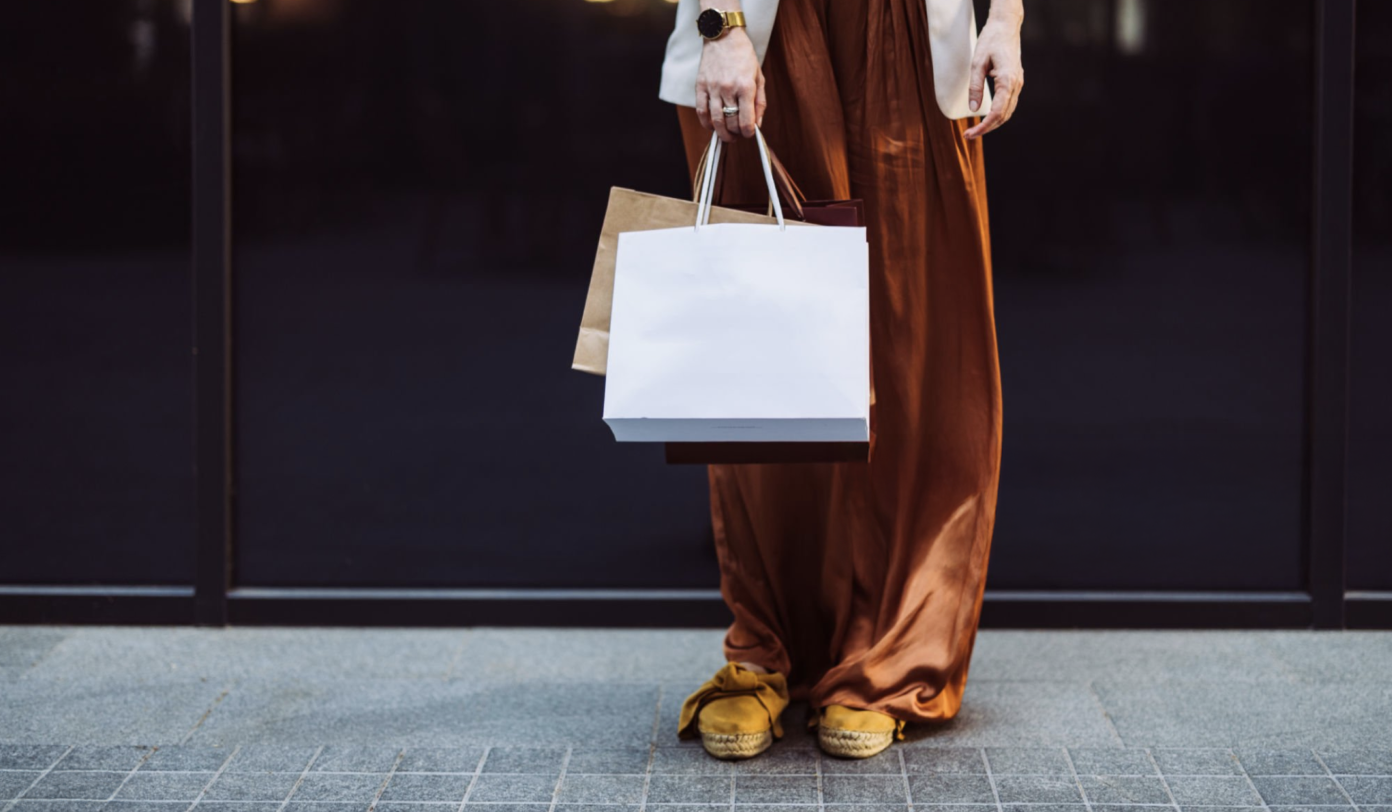For a long time, selling skincare products has largely revolved around providing interactive experiences for customers in store.
‘Try before you buy’ was a crucial aspect of most purchase journeys – before COVID-19 hit, sales in store accounted for up to 85% of beauty product purchases in most major beauty industry markets, superseding the appeal of shopping online.
Today, with the enforced closure of retail stores globally, traditional brick-and-mortar skincare players will be feeling the effects for months to come.
Unlike trends that can be forecasted, anticipated, and planned for, COVID-19 has forcibly taken center stage at a macro level.
The pandemic has accelerated the shift to online for a much broader cross-section of consumers.
So in this ‘new normal’, how can skincare brands pivot to capitalize on a radically changed market and consumers?
Through the lens of what matters to skincare buyers¹ we offer analysis into the current state of the skincare market.
Knowing where to turn: the big insights
2 in 5 skincare buyers say they won’t visit shops for some or a long time after lockdown.
In a pre-coronavirus world, maintaining footfall in store was arguably more important than growing your presence online.
But the balance has shifted. While lockdowns and restrictions are beginning to ease, we won’t see a rapid return to the way things were.
Only 14% of skincare buyers surveyed in our latest research wave plan to visit shops immediately after they reopen. While 40% plan to visit shops quite or very quickly, the same amount also say they’ll wait for some or quite a long time before visiting shops again.
Meanwhile, a further 6% aren’t currently sure when they’ll go back.
So while there’s appetite to return to stores for some, there’s also clear signs of caution among consumers that need to be addressed.
Consumer concerns about safety are a key driver for avoiding physical stores;across a range of questions we asked, planned behaviors largely center around minimizing personal risk.
And crucially,, 52% of skincare buyers say they’ll buy things online more frequently after the pandemic.
With consumer attention gravitating towards online stores at a faster rate than ever, it’d be a missed opportunity for any brand not to invest more heavily in providing a standout experience for customers in the digital space.
Online shopping should see a long-term boost.
Our latest multi-market findings reveal:
- 49% of all pre-existing ecommerce purchasers say they plan to shop online more frequently after the outbreak.
- 32% of those who weren’t purchasing online regularly prior to the outbreak plan to spend more time shopping online after the outbreak.
While the biggest potential boost is likely to be among those already shopping online regularly, increased intent among newer converts is still sizable.
It pays to keep your finger on the pulse – especially in the skincare realm. From our research conducted at the end of April, of those skincare buyers who said they’d purchase items online more frequently, 51% say they’re more likely to order cosmetics or beauty products in particular.
So it’s skincare players most attuned to how their customers have evolved throughout the pandemic who’ll be first in line to recoup any lost profits.
More than half of all skincare buyers are based in APAC.
To make the most of opportunities at present, skincare brands need to focus more on the fastest-growing segments.
APAC, for example, is home to a disproportionate amount of skincare buyers:
Our global research shows more than half of all skincare buyers (57%) reside in the APAC region.
In contrast, 17% are based in Europe, 13% in Latam, 9% based in North America and 5% in MEA.
In the past month, 80% of skincare buyers in APAC purchased an item online, while fifty percent of the world’s online transactions across all categories take place in China.
Before the pandemic, brick-and-mortar retailers in China faced an unpredictable future; shopping malls had battled three consecutive years of revenue decline from 2016 to 2019.
Online retailers, on the other hand, have become increasingly competitive.
But, while consumers in China have plenty of choice in online shopping, global brands are presented with the challenge of finding the ecommerce platform that’s best for them.
Those that are new to China’s online marketplace should opt for digital sales channels with built-in infrastructures that allow them to jump in quickly and easily. Following that, brands should put the work into upgrading and enhancing their own website to strengthen their ecommerce presence even further.
Beauty brands including Huda Beauty recently launched official stores on Tmall –China’s most visited B2C retail website and leading customer engagement platform, home to over 10 million sellers.
Christina Fontana, director of fashion and luxury at Alibaba Europe says Tmall Global can be used as a testing ground for brands to understand how products might be received in the Chinese market. With an already impressive list of brands, the platform’s recent foray into livestreaming capabilities makes it an ideal partner for many international companies that have audiences invested in watching brands’ video content.
According to Fontana, “Once a brand is on board, it has the tools to target any consumer, whether it’s a Gen Zer or an urban silver shopper. Each user has different touchpoints, all targetable through our platform.”
Thinking of ROI at a time when budgets have been cut and some frozen it may make sense for some skincare brands to direct more spend towards the Asian market.
Inside the mind of a skincare buyer: key things to know
Skincare buyers are highly engaged with brands – over half have visited a brand’s website and 1 in 3 have watched a video made by a brand in the past month.
But what does the new journey look like, and how should brands respond?
How they discover brands
Using our latest global research, we can see Dove (32%), Nivea (30%), L’Oréal (27%), are skincare buyers’ most frequently used brands weekly.
In spite of 52% having visited a brand’s website in the past month, skincare buyers say they’re more likely to discover new brands via search engines (36%), recommendations from family and friends (29%) through ads on social media (28%) and ads on websites (25%).
Key social media touchpoints
On a daily basis, 63% of skincare buyers visit YouTube, followed by Facebook (56%) and Instagram (49%).
Their top reasons for using social media are to stay up-to-date with news or current events (43%) with 36% using it for brand research.
Roughly 1 in 5 have asked a question to a brand on a social network, and it’s also around 1 in 5 who’ve clicked on a promoted or sponsored post on a social network.
But social media is also a place to seek enjoyment while passing the time, with 41% visiting social networks to find funny or entertaining content. And providing uplifting and light-hearted content is more important than you might think:
80% of skincare buyers approve of brands providing funny/light-hearted content during the outbreak.
Interests, values and purchase drivers
In terms of what ingredients they want to see in a skincare formulation, the appeal of ‘clean’ products continue to rise in popularity, with 67% of skincare buyers saying they try to buy natural / organic products.
Globally, skincare buyers are holding brands to account more than ever before, with 51% saying they want brands to be eco-friendly, closely followed by 48% who want brands to operate in a socially responsible way.
Their attitudes are backed by these consumers’ willingness to follow through with their convictions – 64% would pay more for sustainable / eco friendly products.
When it comes to their biggest online purchase driver, 55% of skincare buyers say it’s free delivery.
Other factors that score relatively highly are coupons and discounts, and reviews from other customers – 44% and 39% say this respectively.
In conjunction, skincare buyers also cite music (62%) films / cinema (60%) and cooking (58%) as some of their top interests.
Blending where they spend their time (YouTube) with what they do there (watch cooking videos, for example) and what content they consume (1 in 3 watched a branded video in the past month) brands can better pinpoint ways to reach this audience.
This might prompt the idea to place an entertaining video ad on YouTube, featured on their favorite cooking show, for example.
Brand advocacy drivers
The majority (53%) say high quality products would be their number one reason for advocating a brand.
Skincare brands can also increase their likelihood of being advocated by offering rewards such as discounts, free gifts etc (46% say this) and offering great customer service (40% say this).
Discounts both encourage skincare buyers to make a purchase, and encourages word-of-mouth recommendations to others as well. And from our latest coronavirus research, close to half of skincare buyers say they’ll wait for products to be on promotion/sale before purchasing.
In light of the economic uncertainty, consumers might be more cautious when spending. Brands will need to work even harder to make their products an essential, rather than a nice-to-have.
Along with products which meet their expectations, this audience highly values communication and support offered by brands. Skincare buyers want to be heard: 48% say they want brands to listen to customer feedback.
Since there are new rules about consumers physically testing products in person, great customer service provided online can therefore be a powerful substitute.
Brand spotlight: L’Oréal
Understanding the beauty buyer persona is invaluable when it comes to knowing where and how to pivot. The key to guiding decisions with even more clarity is getting to know the buyers of your brand specifically.
Take L’Oréal, for example.
Using our coronavirus research spanning 17 countries from March 31 to May 26, what are key things to know about customers who’ve purchased L’Oréal branded products in the past month? How has their sentiment changed throughout the pandemic?
- Coronavirus levels of concern: the number of L’Oréal buyers who say they are very or extremely concerned about the situation globally has decreased over time, from 78% to 69%.
- News consumption: earlier in the pandemic, 72% said they were watching more news as a result of the outbreak, compared to 63% in our most recent research wave.
- Social media usage: 55% cited using social media more because of the outbreak. Increased time on social media remains fairly stable over time, hovering at 52% in our most recent wave.
- Approval of normal advertising: approval is increasing, with 80% approving or being indifferent to brands running normal advertising, compared to 86% approval/indifference in our most recent research wave.
- Appeal of promotions, offers and perks: 81% somewhat or strongly approved of brands running promotions/offers/loyalty perks, this has since risen to 91%.
Key takeaway: this shows just how much behaviors and attitudes have fluctuated in less than two months – proving the need to stay close to your consumers. With concern decreasing, high approval for brands running promotions, and levels of increased social media usage fairly stable, any skincare promotion advertised by L’Oréal on social media now stands to resonate in the eyes of the majority of their audience.
Online vs. offline: a more balanced future?
Despite physical stores reopening, the challenge for retailers is just beginning.
Our data shows there’s a clear demand for more online focus from brands.
Ecommerce has been a notable winner emerging from the pandemic, creating a broader rethink of existing business models, to which the skincare industry is no exception.
With consumers placing more value on shopping online and planning to continue in that vein when things return to normal, it’s crucial for brands to remain competitive in this space – especially given an increase in sales online can help offset a decline in in store sales.
The past few months, brands have taken cues from customers’ lives, positioning their skincare products as part of a soothing ritual that can offer respite from the stresses of a pandemic. With self-care at the forefront of beauty marketing, there’s been an emphasis on highlighting products that can help consumers feel rejuvenated.
Whether to shape messaging, placement or formats, brands need to hold up a mirror to the times to ensure they’re fully in tune with consumers’ latest reality as various stages of restrictions are lifted.
For an industry that undergoes continuous R&D to produce high-quality products, this same philosophy should be applied to each touchpoint along the skincare buyer’s online journey.

¹Skincare buyers include those who’ve purchased skincare products, moisturizer or exfoliating products the last month.




.webp?width=495&height=317&name=pink_thumb_graphs%20(1).webp)
.webp?width=495&height=317&name=pink_thumb_letter%20(2).webp)
